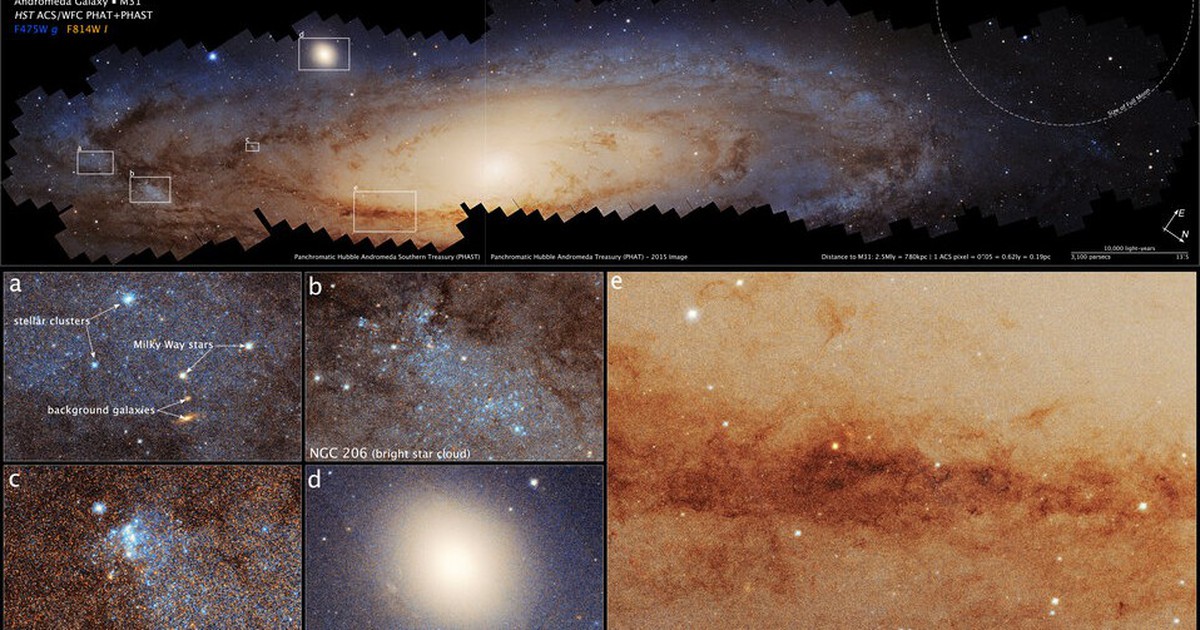Composite image of the Andromeda galaxy under Hubble’s lens
The largest panorama of the Andromeda galaxy shows about 200 million stars and spans a resolution of 2.5 billion pixels, according to the site. science.nasa.gov.
After the Hubble telescope was jointly launched into low earth orbit by the US Space Agency (NASA) and the European Space Agency (ESA), astronomers have counted more than 1 trillion galaxies. in the universe.
However, there is only one galaxy that stands out and is the most important among them: the Milky Way’s neighbor the Andromeda galaxy (Messier 31).
Return the correct name for the Andromeda galaxy
A century ago, American astronomer Edwin Hubble was the first to suggest that the so-called “spiral nebula”, then identified as the Andromeda galaxy, was in fact located as far away as the Milky Way. 2.5 million light years.
Before that, astronomers had long believed that the Milky Way spread throughout the universe. Therefore, overnight, Mr. Hubble’s discovery completely reversed humanity’s understanding by revealing the fact that the universe is extremely large.
And Andromeda is officially identified as a galaxy rather than a nebula, with more than 1 trillion stars.
Astronomy enthusiasts can use the naked eye to observe the Andromeda galaxy on clear autumn nights, appearing as a cigar-shaped object in the night sky.

The image shows more than 200 million stars brighter than our sun in the Andromeda galaxy
The importance of the Andromeda galaxy
A century later, the telescope that bears his name achieved an unprecedented feat by completing the most comprehensive survey of its neighboring galaxy. The new discovery provides clues about the evolutionary history of the Andromeda galaxy, which is completely different from that of the Milky Way.
“Detailed observations of resolved stars will allow humans to piece together the galaxy’s past mergers and interaction history,” said the report’s principal investigator Ben Williams of University of Washington (USA).
Without the Andromeda galaxy as a reference for the universe’s spiral galaxies, astronomers would have less understanding of the structure and evolution of the Milky Way. The reason is that humans are located inside our galaxy.
According to predictions, in about 4-5 billion years, the Milky Way and the Andromeda galaxy will merge with each other.









